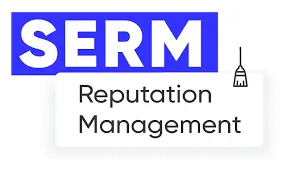Marketing from offline has long migrated to online. Everyone has seen an advertisement in search results at least once, be it Yandex or Google. The usual promotion on the Internet has its own name, setup conditions, choice of placement location - everything depends on the system that places the advertisement, the search engine. Let's start with the simplest and most accessible: what is contextual advertising.
Tashkent, the capital of Uzbekistan, is one of the fastest growing business centers in Central Asia. In such an active market, it is important to be able to stand out and reach your target audience. In this article, we will tell you about one of the most powerful tools for this purpose.

What is contextual advertising?
This is a type of Internet marketing that allows you to declare yourself on the Internet to both your potential audience and find a new one. The possibilities of digitalization have made it possible to cover many more regions, rather than remaining in one city or country.
For example, previously a widely known TV video or radio recording could cover from one specific city to the entire country. That is, one way or another, there were internal restrictions. With the advent of a contextual strategy, any business can significantly expand its geography. An example would be an online store that delivers worldwide. To make a name for yourself, you need to create an information campaign, target your audience by age, location, requests, and so on.
Sounds simple, right? But what does it really look like? Let's figure it out.
Types of contextual advertising:
- Search
- Campaigns in YAN or Google Ads Display Network
- Banners and smart banners
- Google Trading Companies
- Video format
- Targeting
This approach allows companies in Tashkent to instantly reach potential customers when they search for products or services related to your industry. Let's look at each type in detail.
Search campaign
Кампания располагается в поисковой выдаче. Такой блок находится над Топ-10 с пометкой «Реклама». Блоки такой рекламой располагаются как сверху, так и снизу. Все зависит от выбранного места. Верхние блоки, как правило, более привлекательны и заметные. Первое место первого верхнего блока одно из самых дорогих.
Принцип работы прост: вбивается запрос в строку, например, «кафе с пирожными Омск». Как только появляется сформированная выдача с предложениями, появится другие предложения с пометкой в отдельном верхнем блоке.
Matching queries specified by the user and in the advertising campaign show ads to potential users, converting them into leads.
Contextual campaign in the Yandex Advertising Network and the Google Ads Contextual Display System
Рекламная сеть Яндекс (РСЯ) — система размещения объявлений на партнерских сайтах или мобильных приложениях Яндекс с целью их монетизации. Размещение происходит у уже имеющихся партнеров, которые готовы разместить вашу рекламу на своем сайте.
The Google Ads contextual display system (CMS) is similar to the YAN, but placements are allowed on both Google's own sites, such as GMail, YouTube, and on partner sites.
Each campaign is launched through the company's personal account. To access the personal account, you must log in to the Yandex and Google systems.
Banners and smart banners
Баннерная — текстово-графический тип контекстной рекламы. Представляется в виде статичной картинки.
Smart banner differs from banner by the dynamics in the picture. The creativity of such pictures attracts more users. Most often, it offers related products.
Google Shopping Campaigns
Google Merchant Center, иначе торговые кампании — реклама товаров и продуктов на странице выдачи с указанием цены, фотографии, названии продукта, магазина. Здесь наглядно видно, какой интернет-магазин предлагает интересующие пользователя товары, по какой цене, дизайну и так далее. Наглядные примеры позволяют будущим клиентам сформировать определенное мнение о товаре до нажатия на объявление.
Such ads are displayed between the search bar and the ad unit. To launch a campaign, you need to add information about the products.
Video format
Beautiful, bright, eye-catching and expensive – all this can be attributed to video advertising. A similar format is launched, for example, on YouTube. They can be placed on any other sites instead of banners (the original location).
Targeting and contextual advertising
Отдельно можно выделить таргетинг. Таргетинг происходит от английского «target» — в переводе «цель» — маркетинговый механизм, позволяющий точечно выделить аудиторию, соответствующую нужным критериям.
Contextual targeting is also divided into the following types:
- Keyword targeting. Ads are shown to the audience that enters specific queries into the search engine;
- Temporary – the campaign runs at a specific time;
- Geographical – ads work in the selected region (geolocation);
- Socio-demographic – setting by a specific age and gender;
- Retargeting – showing the audience that previously visited the site;
- By interests – customize advertising based on interests and preferences;
- Look alike, or similar audience – advertising for an audience similar to the target audience;
- By device – due to the different interactions between users and the site on different devices, you can limit impressions on computers, tablets and phones;
- Hyperlocal – displays based on a precise location, such as streets or buildings.
Additionally, we can highlight behavioral technology, which takes into account the search history of users.
Advantages and disadvantages of contextual advertising
Any campaign has a number of disadvantages and advantages.
Contextual advertising (CA) is no exception, but has a number of advantages:
1. Setting up the target audience. Before launching a ready-made ad, set up the target audience using previously known data. Such data includes gender, age, location, interests;
2. Contextual marketing allows you to reach more people because we all use the Internet, search for information, including online stores. Advertising campaigns, correctly configured, are immediately triggered, displaying ads. Thus, it is possible to expand the audience from one region to the whole world;
3. Analytics system. Google and Yandex show data collected from advertisements. This information is displayed in Google Analytics and Yandex. Metrica. The received data records each click, automatically counts users and shows general data. According to the received data, it is possible to analyze the success of the campaign. If CRs are launched to conduct A/B testing, in this case the success of one of the campaigns is compared. Such a systematic approach allows you to forecast the budget in the future;
4. Convenience of launching and setting up. Here, only you decide when you want to launch advertising. You can launch advertising, as well as stop it, at any time. For settings, only existing data obtained earlier from analytics systems is required;
5. The transition is paid for. The budget distribution is tailored to pay for each transition on the ad;
6. Quick results. As soon as a contextual campaign has been launched, after some time (minutes, hours) leads start to arrive and conversions are made;
7. If compared with SEO, the effect of contextual is much faster. SEO works slower and for a long time, advertising gives a quick effect.
Advantages contextual advertising in Tashkent are obvious. Firstly, you get a high degree of target audience, as your ad is displayed to the people who are interested in your business. Secondly, you can accurately measure the results and effectiveness of the campaign, which allows you to optimize your budget and improve your promotion strategy.
The disadvantages include:
1. Self-setup can be expensive due to inexperience, which threatens to waste your budget;
2. Вероятность «нападок» со стороны конкурента — скликивание бюджета путем нажатия на объявления;
3. A beginner will need more time to understand the settings. Therefore, it is better to entrust such a matter to contextual advertising specialists;
4. There will be money, there will be a feast. As soon as the allocated budget is equal to 0, advertising campaigns will stop working. They will need to be turned on again.
Advertising ROI
Contextual advertising definitely brings good income to the company in Tashkent. But like any other, it should be effective, not hitting the budget too hard. Despite the huge expenses in the first trial periods of targeting, in order to identify the most profitable option for an advertising campaign, expenses must be controlled.
The assessment of the payback of contextual advertising in Tashkent is also subject to a number of specific factors and features, taking into account the context of the region and the market.
Control helps not to waste the budget. So how can you understand the payback of the campaign?
There are several options that allow you to calculate the costs of each campaign, then compare them. Comparison allows you to identify the most profitable one. In practice, this looks like this.
Here are some key indicators of contextual advertising ROI that may be important for Tashkent:
ROI (Return on Investment)t) – the return on marketing investment indicator, shows the profitability or unprofitability of advertising campaigns. To calculate ROI, use the following formula: subtract expenses from all profits, divide again by the initial expenses, multiply by 100%. An indicator above 100% means the campaign is successful, there is income, below – unprofitability
CR – conversions. This includes target actions performed by site visitors: making a call, clicking a button, making a purchase, subscribing to a newsletter, and other actions that can be customized as needed. The formula for calculating is as follows: target action divided by the number of visitors and multiplied by 100%
CPA (Cost per Action) – the cost of one action. It is calculated as follows: advertising costs are divided by the total number of target actions. The lower the indicator, the more profitable. That is, the client's action is cheaper in terms of costs;
CTR (Click Through Rate) – the click-through rate of ads. It is calculated as follows: the number of clicks is divided by the number of ad impressions. High click-through rate is a sign of a well-tuned campaign, and the cost per click is lower, but ads are shown higher and more often.

There are more contextual ROI metrics, but not all of them are required. The metrics listed above are often sufficient.
The payback period for a contextual campaign is different for each business. However, for many, the payback period can begin in 2-3 months. The most important thing is to set up contextual ads correctly. If contextual campaigns are launched for the first time, it is better to test them. Conducting A/B tests is expensive. However, there is an effect: identifying the most profitable ad. In turn, this will entail budget savings. Therefore, it is better to entrust the ad setup to professionals, so as not to waste the budget. Get a free consultation on ad setup by leaving your contacts and we will contact you.
Conclusion
Context is one of the additional methods of SEO promotion of the site. Remember, context, if configured correctly, will bring a sufficient number of clients to the site, will tell about your company. The effect ends when the allocated budget ends. Accordingly, it is better to periodically restart the context to keep sales "in good shape", advertise products to a wide audience.
Контекстная реклама — хороший способ заявить о себе, расширить аудиторию, найти потенциальных клиентов, готовых немедленно купить. Однако стоит помнить, что грамотно настроенная реклама способна сэкономить бюджет, увеличить продажи. Необходимо следить за оформлением рекламы в поисковой системе, подбирать ключевые слова, обновлять их в соответствии с запросами юзеров, обновлять креативы. Для большего эффекта лучше прибегать к нескольким видам онлайн-рекламы одновременно








